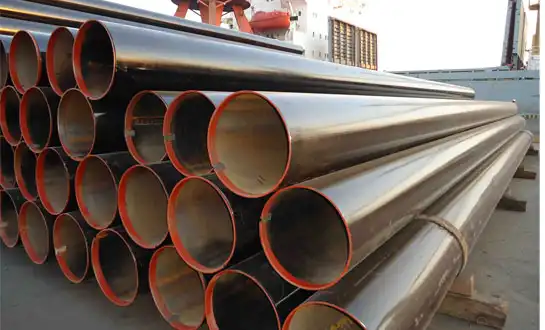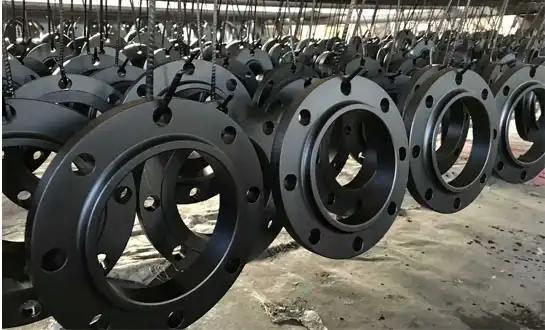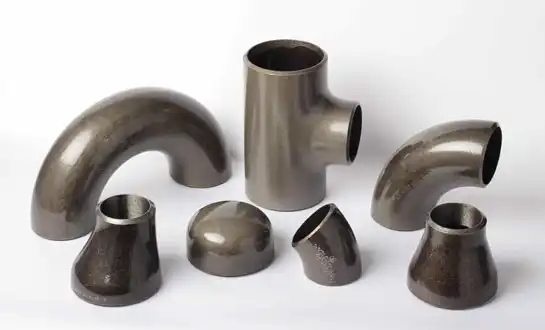Intergranular Corrosion Risks in Steel Pipe Fittings and How to Avoid
Intergranular corrosion is one of the most dangerous ways that steel pipe fittings may break down in industrial settings. Unlike uniform surface corrosion, intergranular attack occurs along grain boundaries within the metal structure, compromising integrity from within while leaving external surfaces deceptively intact. Because of this, rust like this can lead to big breakdowns with no warning signs, it is very important for engineers and building managers to make sure pipe systems are reliable.
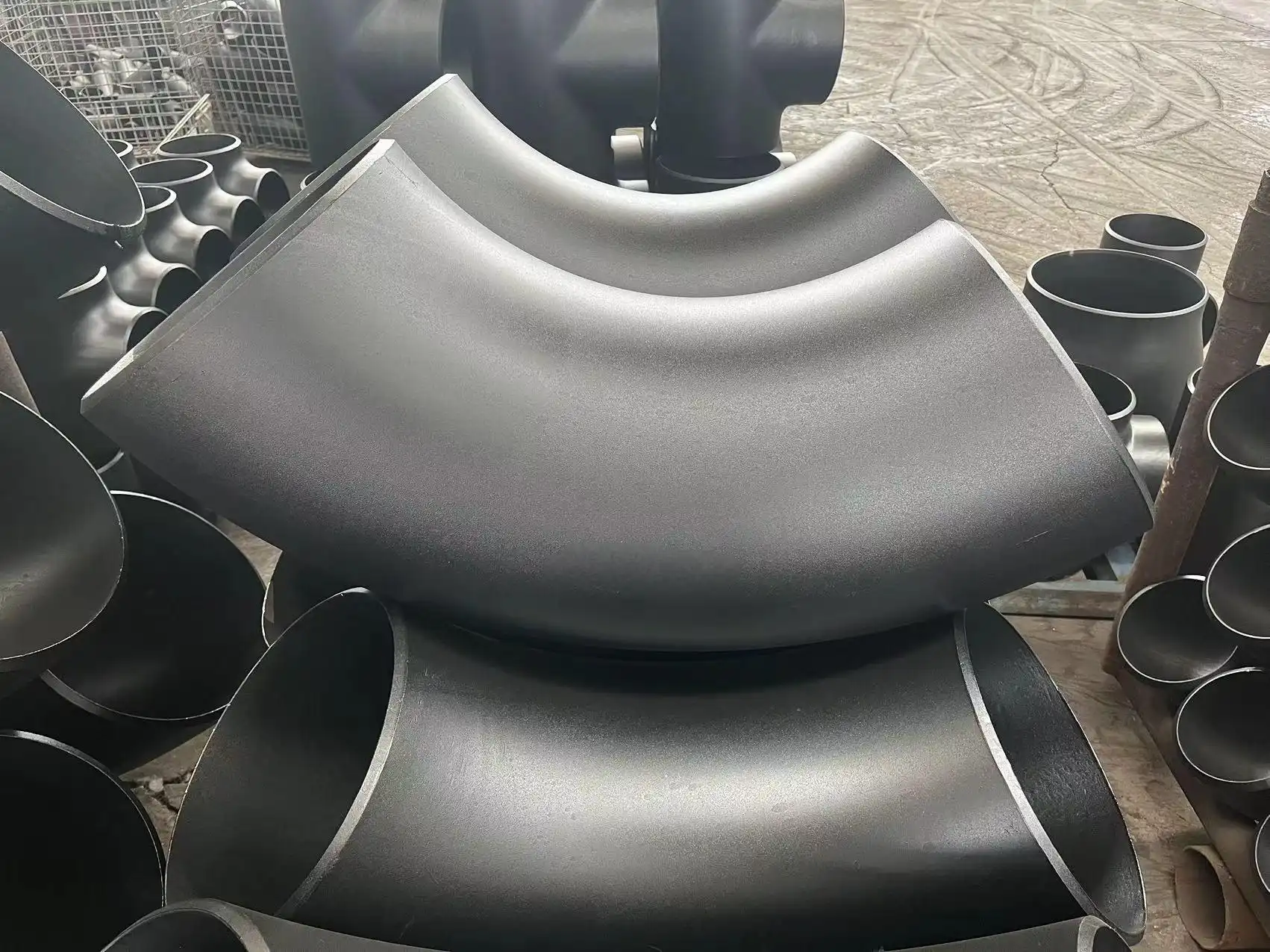
Understanding Intergranular Corrosion Mechanisms
Metallurgical Factors
The vulnerability of steel pipe fittings to intergranular corrosion originates from metallurgical phenomena during manufacturing and heat treatment. When stainless steel fittings are exposed to temperatures between 450°C and 850°C during welding or heat treatment, chromium carbides precipitate preferentially along grain boundaries. This precipitation depletes chromium content in adjacent areas, creating chromium-depleted zones that lack sufficient corrosion resistance compared to grain interiors. These sensitized regions become anodic relative to the surrounding material, establishing electrochemical cells that drive preferential corrosion along grain boundaries.
Carbon steel pipe fittings face similar risks when carbide networks form along grain boundaries during cooling from elevated temperatures. The grain boundary chemistry differs significantly from the bulk material composition, creating the electrochemical potential difference necessary for selective attack. Metallurgical examination of corroded steel pipe fittings typically reveals narrow, deep penetration paths following the grain boundary network, which can propagate through the entire wall thickness while affecting only a small percentage of total material volume.
Environmental Conditions
Specific environmental factors dramatically increase intergranular corrosion rates in susceptible steel pipe fittings. Aqueous solutions with chloride ions, especially when the temperature is high, generate harsh conditions that take advantage of weak spots in grain boundaries. Acidic environments with pH levels below 4.0 intensify electrochemical activity at sensitized grain boundaries. Oxidizing species such as dissolved oxygen, ferric ions, or nitric acid compounds enhance corrosion potential, driving more vigorous intergranular attack.
Temperature plays a dual role in intergranular corrosion development; elevated operating temperatures not only accelerate electrochemical reaction kinetics but can also contribute to sensitization if thermal cycling occurs within the critical temperature range. Stagnant or low-velocity flow conditions allow concentration cells to develop, where local chemistry at the fitting surface differs from bulk fluid composition. Environments with alternating wet-dry cycles can be particularly damaging, as concentration effects during evaporation intensify corrosive attack at grain boundaries.
Detection Methods
Early detection of intergranular corrosion presents significant challenges due to the subsurface nature of the damage. Standard visual inspection techniques prove inadequate, as external surfaces may show minimal discoloration even when extensive grain boundary attack has occurred. Advanced nondestructive examination methods provide more reliable assessment capabilities:
-
Ultrasonic testing detects wall thickness reduction and internal discontinuities
-
Eddy current testing identifies near-surface conductivity changes associated with grain boundary depletion zones
-
Electrochemical testing methods evaluate sensitization levels in stainless steel pipe fittings
-
Metallographic examination through destructive sampling provides definitive identification
For critical applications, implementing periodic inspection programs using multiple complementary techniques provides the most reliable approach to managing intergranular corrosion risks.
Prevention Strategies Through Material Selection and Processing
Proper Steel Grade Selection
Selecting appropriate steel grades represents the primary defense against intergranular corrosion. For stainless steel applications, low-carbon grades designated with "L" suffixes such as 304L or 316L contain reduced carbon content that minimizes carbide precipitation during thermal exposure. Alternatively, stabilized stainless steel grades containing titanium or niobium additions, such as 321 or 347, employ these elements to preferentially form stable carbides, leaving chromium available for passive film formation.
Duplex stainless steel grades are more resistant because their two-phase microstructure produces a complicated grain boundary structure that prevents selective attack. When specifying steel pipe fittings for known corrosive service, consulting corrosion engineering references and reviewing successful service experience guides appropriate material selection. While premium corrosion-resistant grades typically carry higher initial costs, evaluating total lifecycle economics often justifies the investment for critical applications.
Heat Treatment and Fabrication Best Practices
Proper thermal processing during manufacturing and installation prevents sensitization that makes steel pipe fittings vulnerable to intergranular corrosion. Solution annealing stainless steel fittings at temperatures above 1040°C dissolves chromium carbides and returns chromium to solid solution throughout the grain structure. Rapid cooling following solution annealing prevents carbide re-precipitation.
Welding methods have a big effect on how likely intergranular corrosion is to happen. Employing low-heat-input welding techniques, using matching low-carbon or stabilized filler metals, and implementing post-weld heat treatment where feasible minimizes sensitization in welded steel pipe fittings. Normalizing heat treatments improve the grain structure and get rid of residual stresses in carbon steel applications.
Quality fabrication practices that avoid contamination from sulfur, chlorides, or other corrosion-promoting species during processing protect steel pipe fittings from premature service degradation. Documentation of thermal processing parameters provides traceability ensuring that heat treatment objectives were achieved.
Protective Coatings and Surface Treatments
Applying protective barrier systems to steel pipe fittings provides an additional defense layer against intergranular corrosion. Organic coating systems including epoxies, polyurethanes, and fluoropolymers isolate the metal surface from corrosive environments. For maximum effectiveness, surface preparation through grit blasting or chemical cleaning removes mill scale and contaminants.
Passivation treatments using nitric or citric acid solutions remove surface contamination and promote uniform passive film formation on stainless steel pipe fittings. In more hostile settings, using more than one protection strategy together offers defense-in-depth against intergranular corrosion. Regular coating inspection and maintenance extends protection system service life.
Operational Practices and Monitoring Programs
Water Chemistry Control
Maintaining appropriate fluid chemistry represents a critical operational strategy for preventing intergranular corrosion. Water treatment programs that control pH within optimal ranges minimize the electrochemical driving force for corrosion reactions. Reducing dissolved oxygen concentrations through mechanical deaeration or chemical oxygen scavenging decreases oxidizing potential.
Corrosion inhibitor programs employ chemical species that preferentially adsorb onto metal surfaces, blocking active corrosion sites including sensitized grain boundaries. Selecting inhibitors compatible with the specific steel grade and operating conditions ensures effective protection. Keeping an eye on the chemistry of the water all the time lets you make changes ahead of time to keep it safe.
Cathodic Protection Systems
Steel pipe fittings installed in underground or submerged environments face elevated intergranular corrosion risks. Cathodic protection systems provide electrochemical corrosion control by making the steel surface cathodic. Impressed current cathodic protection employs external power sources connected to inert anodes, while galvanic systems utilize sacrificial anodes.
Proper cathodic protection design requires accurate current demand calculations. Potential measurements verify that steel pipe fittings achieve and maintain protective potential ranges. Even more good things happen when you use cathodic protection and good closing items together. Regular checks make sure that the system keeps working as its parts wear out over time.
Predictive Maintenance
By putting in place full predictive maintenance procedures, you can address the hazards of intergranular corrosion before they happen. Risk-based inspection strategies prioritize examination resources toward fittings in most aggressive service. Establishing baseline condition assessments during initial installation provides reference data for subsequent comparisons.
Trending inspection data over time reveals whether corrosion rates remain stable or accelerate. Condition-based replacement strategies that remove fittings at predetermined damage thresholds maximize asset utilization while maintaining safety margins. People can get smart about how to make their things last longer when they keep good records of them.
Conclusion
Many things need to be done to keep steel pipe fittings from rusting between the grains. To do these things, you need to keep an eye on everything, choose the right materials, keep track of the chemicals, and make sure the manufacturing process goes smoothly. By understanding how metals work, knowing which conditions are high-risk, and using established preventative methods, this sneaky failure mode may be completely eliminated. To make sure the performance lasts, even in tough work environments, this is done.
HEBEI RAYOUNG PIPELINE: Your Source for Corrosion-Resistant Steel Pipe Fittings
At HEBEI RAYOUNG PIPELINE TECHNOLOGY CO., LTD., we recognize that material quality and manufacturing excellence form the foundation of corrosion resistance. As leading steel pipe fittings manufacturers, we supply diverse industrial steel pipe fittings manufactured from properly selected steel grades with controlled heat treatment to resist intergranular corrosion. Our ISO 9001:2015 certified quality management system ensures every steel pipe fitting meets rigorous specifications. We give full paperwork for materials, like records of how they were heated and information on how well they don't rust.Contact our technical team at info@hb-steel.com to discuss your specific application requirements.
References
1. Jones, D.A. (2023). Principles of Corrosion Engineering and Corrosion Control.
2. Sedriks, A.J. (2024). Corrosion of Stainless Steels: Mechanisms and Prevention Strategies.
3. Fontana, M.G. & Greene, N.D. (2023). Corrosion Engineering: Fundamentals and Applications.
4. Revie, R.W. & Uhlig, H.H. (2024). Intergranular Corrosion in Metallic Structures.
5. Ahmad, Z. (2024). Metallurgical Aspects of Corrosion Resistance in Steel Alloys.

Need a quote? Want to see samples? Just say hello. We’re friendly. We’re fast. And we’re ready when you are.
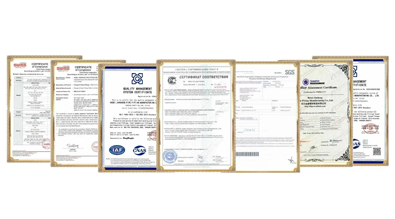
Welcome to RAYOUNG – Strong Pipes, Stronger Promise
